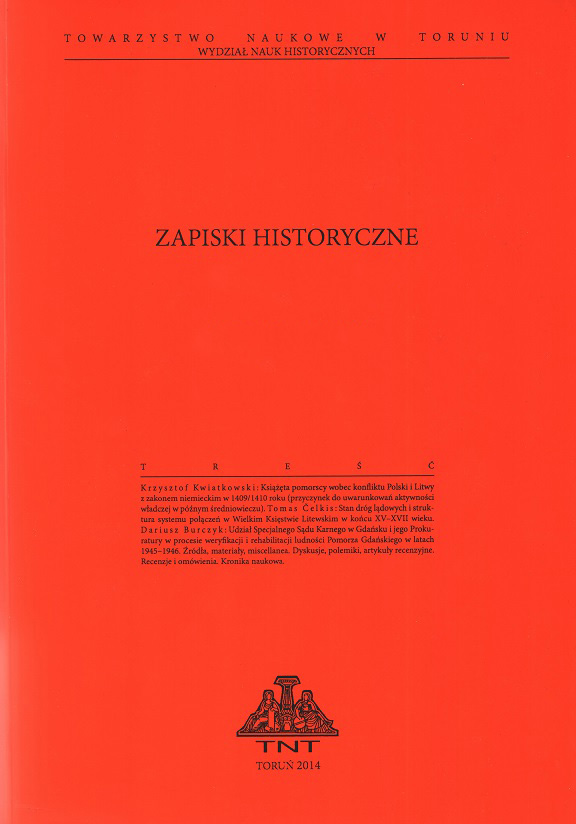Biskupi i krzyże
Bishops and Crosses
The So-Called Szczecin Episode of the Polabian Crusade (1147) in the Account by Vincent of Prague
Author(s): Szymon GórskiSubject(s): History of Church(es), Military history, Political history, 6th to 12th Centuries
Published by: Towarzystwo Naukowe w Toruniu
Keywords: the Middle Ages;crusaders;Polabian Slavs;Szczecin;Duke of Pomerania Ratibor;Saint Otto of Bamberg;Bishop of Pomerania Adalbert/Wojciech;Bishop Anselm of Havelberg;Bishop Henryk Zdík
Summary/Abstract: Half a century after the first crusade, the fall of the County of Edessa (1144) became an impulse for the second crusade. During the announcement of the crusade in the German territories, an alternative project of an expedition against pagan Polabian Slavs was created. It had a much more limited range and it was carried out in the summer of 1147. The Saxon troops took part in it, under the commandment of the Saxon duke Henry the Lion, the Margrave of the Northern March Albert the Bear, Archbishop Frederick of Magdeburg and Bishop Anselm of Havelberg. Danish, Burgundian, Moravian and Polish military units cooperated with them. One of the crusade armies, fighting with the Lutici, came to Szczecin. The army withdrew from there after the arrangement with the Pomeranian bishop Adalbert (=Wojciech?) and the Duke of Pomerania Ratibor. The only source discussing this episode is the account of the Bohemian chronicler Vincent of Prague, for whom the Bishop of Moravia Henryk Zdík, one of the leaders of the crusade, was probably the source of information. The aim of the article is to analyse this account – first of all, to show the role played by the figures of the Saxon bishops and the Pomeranian bishop in Vincent’s narrative. The article draws attention to the supposed reasons for their being displayed at the expense of the wealthy laity: it is the social identity of the chronicler, but above all the image of the confrontation of bishops as a clash of different approaches to Christianity existing in the Church. In comparison with the curt account of Annales Magdeburgenses about Ratibor’s commitment to support Christianity (1148), the significance of the figure of Saint Otto of Bamberg as a pioneer of the Christianization of Pomerania is underlined. Next, some of Vincent’s statements are exposed in the context of criticizing the unsuccessful Levant crusade in order to capture narrative patterns. Another motif is the exhibition of crosses as a manifestation of the Christian faith. The exposal of the symbol of the cross by the inhabitants of Szczecin, bearing the marks of a war trick – the crusaders themselves used this sign – is also juxtaposed with the display of the banner of Svetovit in Arkona besieged by the Danes (1168). It could also be used to get Christians’ God to restore peace. The second sign of the Christian character of the place is the very presence of the clergy in the person of Bishop Adalbert.
Journal: Zapiski Historyczne
- Issue Year: 83/2018
- Issue No: 3
- Page Range: 7-32
- Page Count: 26
- Language: Polish

